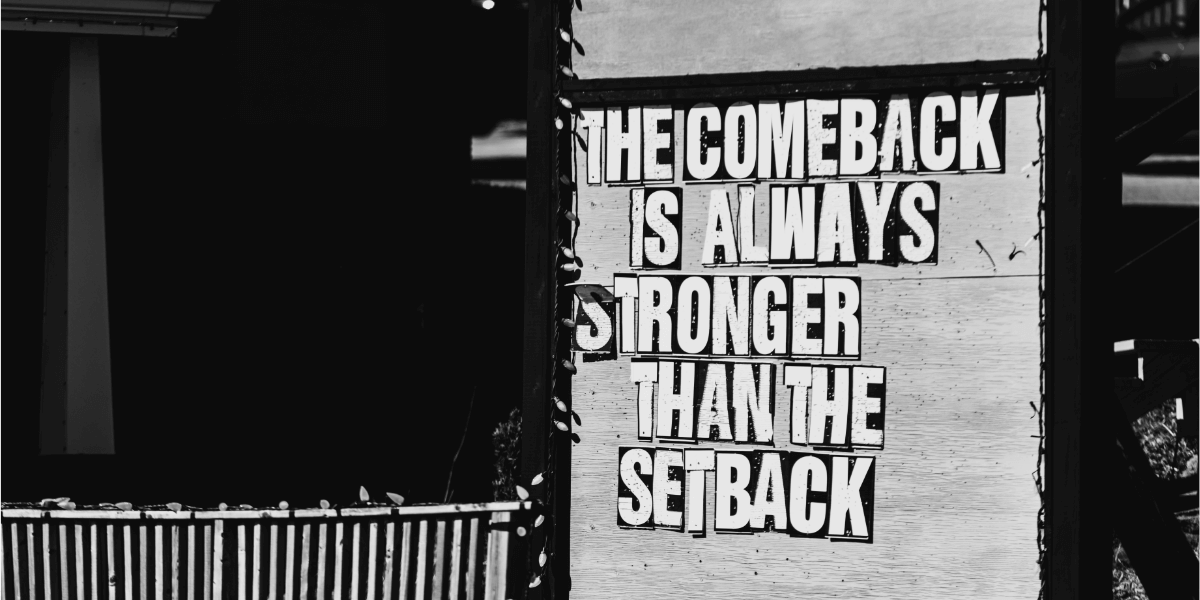Newsletters
When Tiger Woods crashed his SUV in February 2021, it appeared that his golfing days were done. Despite having won the Masters in 2019, Woods’ future was already in question after having yet another back surgery in 2020, and the injuries sustained in this latest crash threatened whether Woods would be able to keep his leg, let alone compete at a professional level.
And yet, a mere fourteen months after that shocking accident, Tiger was back playing golf. And not just any golf – he returned to Augusta to play in the Masters Tournament. And while his final score was far from what he wanted, his first round beat out several younger, healthier players and he made the cut to play the full weekend.
What struck me as I followed the coverage before and after the Masters was his approach to the moment. During the peak of his career, Tiger was known as much for his focus and mental strength as his golf abilities. He seldom smiled and was all business. But this time was different. In the months leading up to the Masters, Tiger played a father-son tournament with his son Charlie, and was more relaxed – informal, laughing, making jokes at his own expense. And during the Masters, this shift in demeanor remained. He was focused more on just making it through the tournament, testing his own abilities, grateful to even be there at all. When asked afterwards if just playing in the tournament was a victory, he was quick to answer, “Yes.”
This is not a Tiger Woods appreciation column, although what he has accomplished is astonishing. Rather, it’s a real-world example of how to approach change. No, we aren’t all professional golfers with 15 major wins. But we are all human beings who have faced situations that caused us to have to redefine success for ourselves and others. For some, it’s the shock of suddenly losing your job during a reorganization; for others, it could be a cross-country move; and for still others, it might be a life-changing diagnosis. Whatever it might be, there is power in approaching the change with self-awareness – acknowledging the reality of it; admitting your reaction to it; allowing yourself to be angry, disappointed, depressed, excited, anxious, and all the feelings. And to accept that whatever happens, things will be different.
Professionals in any industry hold themselves to a certain standard. It’s hard to recalibrate expectations in the moment. We see it when we work with organizations trying to improve their business processes. They sometimes struggle to accept that change sometimes means defining success in a new way. Where success may have once meant number of transactions, the new measure may be impact on employee experience, which isn’t always easy to understand.
Tiger Woods’ return to golf is a remarkable illustration of how perseverance, patience, humility, and determination can lead to moving forward rather than waiting until the return of “normal.” And while Tiger can’t fully let go of his core focus and drive, even he was able to recognize – sometimes just being in the game is victory enough.
With warm regards,
— Mary Faulkner
Principal/Closet Golf Fanatic, IA
Voice of HR

The provider / client relationship: Part I – bullying behaviors
What happens when providers’ behaviors edge into bullying behavior? Kimberly Carroll and Corrina Nation share their observations in this first post of a two-part series.
Where You Can Find Us

Can you believe it’s almost May? We’ve been so busy, we didn’t even realize how quickly some of our upcoming events are approaching! We hope you can join us:
July 16, 2022: Join Kimberly Carroll and Mary Faulkner for a webinar hosted by HR Executive examining the truth about culture vs behavior and the impact it has on the employee experience. Stay tuned for more details!
August 4-5, 2022: Mark Stelzner has been invited to keynote at TechHR India 2022. The conference theme is #FreshEyes.
September 13-16, 2022: Once again, IA is pleased to support the the HR Tech Conference in Las Vegas! As agendas are confirmed, we will share more details. Hope to see you there!
On Our Radar
There’s something about springtime that brings out some of the more remarkable workplace stories. Here are a few the IA team wanted to share:
- You may have seen this story about the former CEO of Google making the argument for why you have to be in the office. While the team agrees there are times when being face-to-face is beneficial, we questioned the blanket belief that you can’t learn to manage unless you’re in an office. Work is changing and leadership will have to adapt. [Side note: the same day the story about Eric Schmidt, we found this article touting a great new perk Google was offering to lure people back into the office – electric scooters.]
- The increased focus on employee wellbeing – including physical, emotional, and financial elements – has elevated the need for leaders at all levels to be more compassionate. Unfortunately, as Harvard Business Review points out, this increased compassion is often at odds with the drive for results.
- And in keeping with the theme of “what were they thinking” about return to the office, ZDNet suggests that maybe part of the issue is that managers are continuing to work remotely despite the fact that their employees are required to make an appearance. And we wonder why workers are looking for new opportunities….
About IA
As trusted advisors to senior leaders, IA supports strategic initiatives that transform the way organizations work.
Our seasoned team of professionals apply a revolutionary eye, deep domain experience, and flexible tools to accelerate the achievement of even the most ambitious goals. With a cross-functional, strategic perspective, we thrive on big, messy problems. Whether large or small, public or private, domestic or international, it’s our job to support leaders and their teams in achieving outcomes that are truly unique to their culture and objectives.
Every organization has a catalyst for change – learn more at ia-hr.com.






